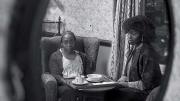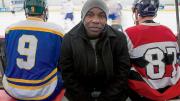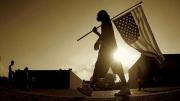Soul On Ice, Past, Present, and Future, by Canadian filmmaker Damon Kwame Mason, explores the history of black hockey athletes, from the Coloured Hockey League in the Canadian Maritimes in the 1800s, to centerman Herb Carnegie, commonly called “the best black player never to play in the NHL,” and Willie O’Ree, who debuted with the Boston Bruins in 1958.
The film won the People’s Choice Award for best feature at the Edmonton International Film Festival, and should be a top draw during the eighteenth annual Roxbury International Film Festival in Boston (June 22-July 1). Held at the Museum of Fine Arts, the event highlights works by emerging and established independent filmmakers of color, particularly those based in New England, and includes Q & A sessions, panel discussions, workshops, and parties with the filmmakers and other guest artists.
Also on this year’s lineup is the 12-minute short film Gracie, by the young London writer and director Matthew Jacobs Morgan, and A Ferguson Story, directed by award-winning filmmaker Lonnie Edwards. Gracie is based partly on autobiographical events and tenderly reflects on the nature of memory and reality through a boy’s efforts to help his mentally impaired grandmother get “back” to her native Jamaica. A Ferguson Story offers “a unique perspective on police aggression and the events following the tragic death of Mike Brown,” says festival director Lisa Simmons, who is also president of the nonprofit Color of Film Collaborative that runs the festival.
The “affect of the world two years before the festival will have a bearing on the films submitted,” she explains, because it’s taken that much time (if not longer) for them to be made. “Interestingly,” she adds, given the cultural and political climate and movements, such as Black Lives Matter, “this year there are a number of romantic comedies and relationship films, as well as films that deal with race, culture, identity, and education.”










